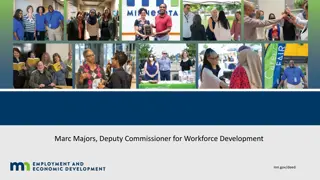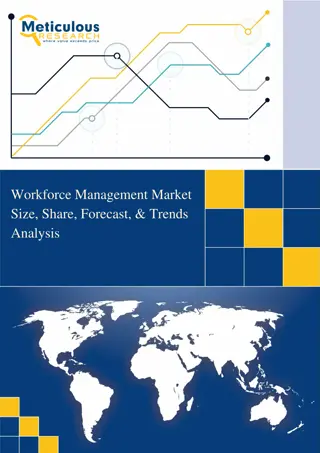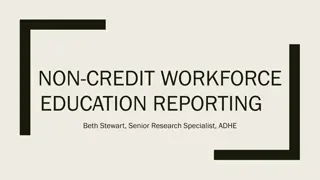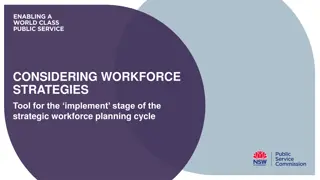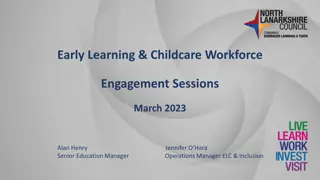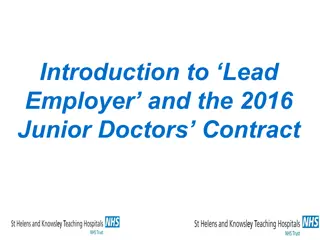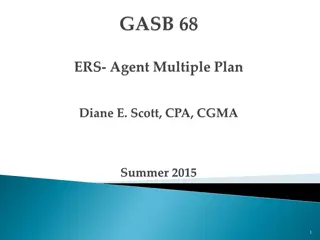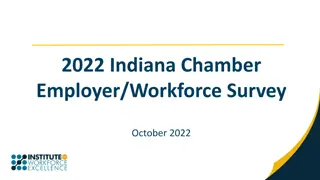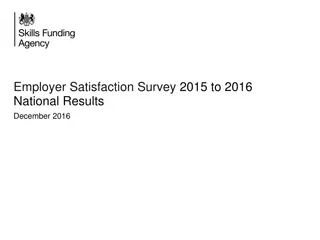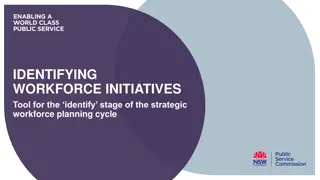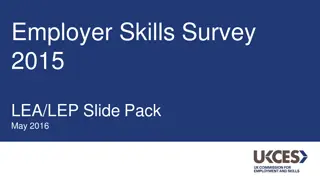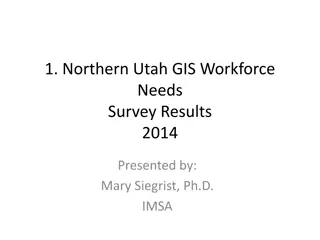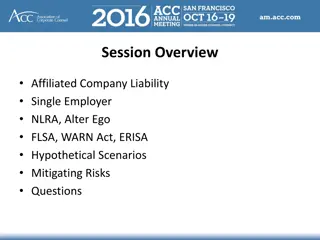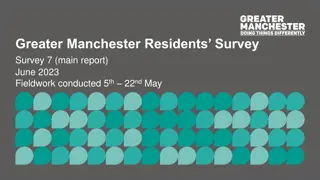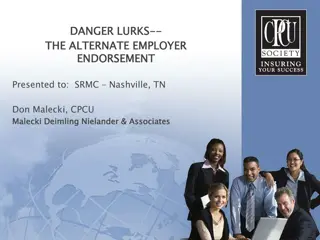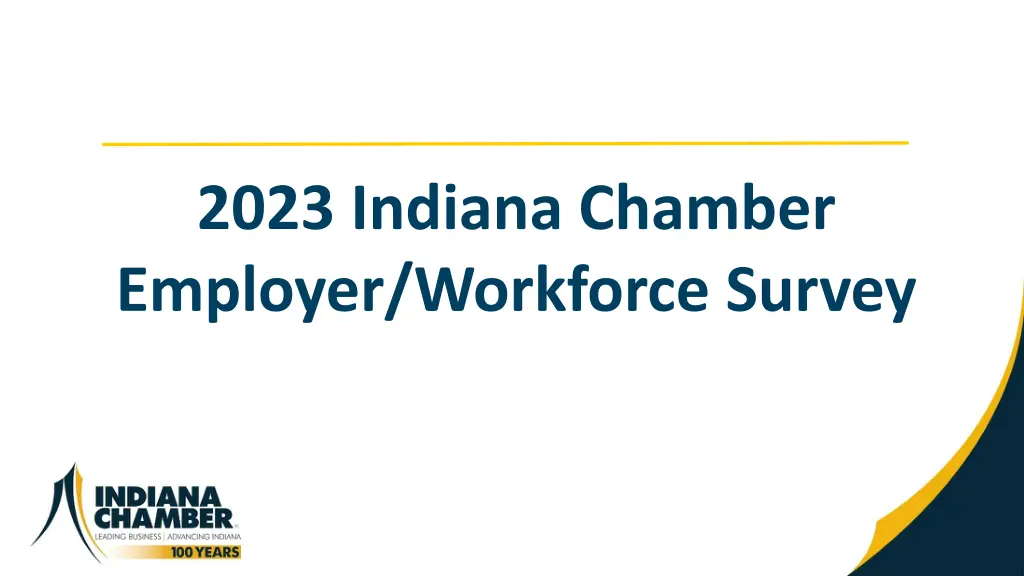
Indiana Chamber Employer Workforce Survey 2023 Insights
Explore key findings from the 16th annual Indiana Chamber Employer Workforce Survey, including workforce size, organization types, future outlook, revenue growth, hiring trends, and challenges in filling open positions.
Download Presentation

Please find below an Image/Link to download the presentation.
The content on the website is provided AS IS for your information and personal use only. It may not be sold, licensed, or shared on other websites without obtaining consent from the author. If you encounter any issues during the download, it is possible that the publisher has removed the file from their server.
You are allowed to download the files provided on this website for personal or commercial use, subject to the condition that they are used lawfully. All files are the property of their respective owners.
The content on the website is provided AS IS for your information and personal use only. It may not be sold, licensed, or shared on other websites without obtaining consent from the author.
E N D
Presentation Transcript
2023 Indiana Chamber Employer/Workforce Survey 1
Employer Survey Background 16th annual survey 1,003 responses 75% of responses from Owner/Management 13% of responses from HR/Operations Broad industry sector representation 2
# of Indiana Employees 5 or less: 12% 6 to 19: 20% 20 to 49: 20% 50 to 99: 14% 100 to 499: 20% 500 to 999: 7% 1,000 or more: 8% 3
Organization Type For Profit 16% Non Profit 73% 11% Govt./Other 4
OUTLOOK: Is Indiana headed in the right direction or on the wrong track? RIGHT DIRECTION WRONG TRACK 68% 21% NOT SURE 11% 5
REVENUE GROWTH: Your Company vs. Industry Peers? 9% MORE 37% 48% LESS ABOUT THE SAME 6
Increase Size of Workforce Next 1-2 Years 70% 58% 55% 60% 48% 45% 50% 41% 40% 30% 20% 10% 0% 2019 2020 2021 2022 2023 7
Supply of Applicants Does Not Meet Needs 75% 72% 70% 65% 62% 60% 55% 50% 52% 50% 50% 45% 2019 2020 2021 2022 2023 8
Left Jobs Open in Past Year Due to Underqualified Applicants 74% 80% 67% 70% 60% 60% 49% 45% 50% 40% 30% 20% 2019 2020 2021 2022 2023 9
How are you filling open positions? 1. Left position open 2. Reassigned responsibilities internally 3. Hired underqualified candidate 4. Hired temp workers 5. Hired remote workers 51% 39% 30% 23% 21% 10
Planned Changes in Next Year? Adding new staff due to growth/new product lines Current staff performing additional job functions 47% 46% Restructuring positions due to evolving job functions 36% Retraining employees due to new technology 27% Utilizing temp workers/contract staff 23% Automating functions formerly done by employees 18% 11
TECHNOLOGY: Investing in Automation + Artificial Intelligence in next 5 years? LIKELY 43% 39% UNLIKELY NOT SURE 17% 12
Is meeting your talent needs a challenge? YES 74% 23% NO 14
Biggest Workforce Challenges? 1. Attracting/retraining workers 2. Inflationary pressures 3. Government regulations 4. Supply chain challenges 5. Competition 42% 9% 5% 2% 2% 15
External Factors Negatively Impacting Talent Attraction/Retention? Childcare Housing Transportation Diversity of Community Quality Schools 30% 30% 19% 15% 15% 16
Employee Family/Childcare Support Flexible Working Hours/Days Paid Maternity Leave Paid Paternity Leave Dependent Care Flex Spending Account Onsite Childcare/Offsite Partnership Childcare Subsidy/Reimbursement Unsure 52% 36% 26% 15% 13% 7% 15% 17
Do you/would you consider hiring? Individuals with physical disabilities 47% Ex-Felons (non-violent offenses) 41% Immigrants/non-English speakers 35% Individuals with mental disabilities 27% Ex-Felons (violent offenses) 10% NONE OF THE ABOVE 8% 18
IMMIGRATION: Support extending DACA? (Deferred Action for Childhood Arrivals) YES 21% 63% NO NOT SURE 16% 19
Skill-Up Support for Current Employees? Flexible Work Hours 53% Prepaid Tuition/Reimbursement 42% Onsite/Online Instruction 28% Career Coaching Support 21% Credit for Prior Learning 10% None of the Above 20% 21
Cultivating Future Talent? Job Shadowing/Site Visits 53% College Internships 36% Career Fairs 30% High School Internships 25% Apprenticeships 19% Practicums/Clinical Rotations 7% Unsure 20% 22
Hiring Based on Competencies/Skills vs. Education Level/Years of Experience YES or INTERESTED NO/NOT INTERESTED 67% 22% NOT SURE 12% 23
HR Staff Dedicated to Strategic Talent Attraction/Development/Retention YES 44% 48% NO OTHER/UNSURE 8% 24
Challenges + Opportunities 25
Employer-Provided Training + Credentials No credential Industry-recognized credential Credential provided by employer 18% College degree/credential Unsure 48% 33% 13% 9% 26
Employer Awareness of Next Level Jobs YES 41% Yes, and we actively promote it to our employees. 16% Yes, but we don t promote it. 26% NO or NOT SURE 58% 27
Employer Awareness of Other State Workforce Training Programs? YES 4% 3% 2% 2% IMPACT (SNAP/TANF recipients) HIRE (formerly incarcerated) EARN (work-study program) Skills Enhancement Fund (IEDC) 28
Employer Awareness of Talent Resource Navigator YES 21% Yes, I have visited or heard of this. NO 73% No, I am not familiar with it. 57% No, but I d like to learn more about it. 16% 29
Talent Pipeline Partnerships? YES 37% 24% 23% 20% 28% Higher Education Community-Based Nonprofits K-12 Schools Regional Workforce Boards None of the Above 30
KEY TAKEAWAYS The majority (68%) of Indiana employers feel the state is headed in the right direction, significantly above all Hoosier voters (only 39%). Notable declines in employers leaving jobs open and saying supply of applicants does not meet their needs. Talent/workforce is still the biggest challenge for most employers well above inflation, supply chain and other barriers. Employers are signaling greater openness to new approaches to meeting their workforce needs (i.e., skills-based hiring, talent diversity, etc.) Employer awareness of workforce resources and intentional engagement with talent pipeline partners remains low overall. 31 31




